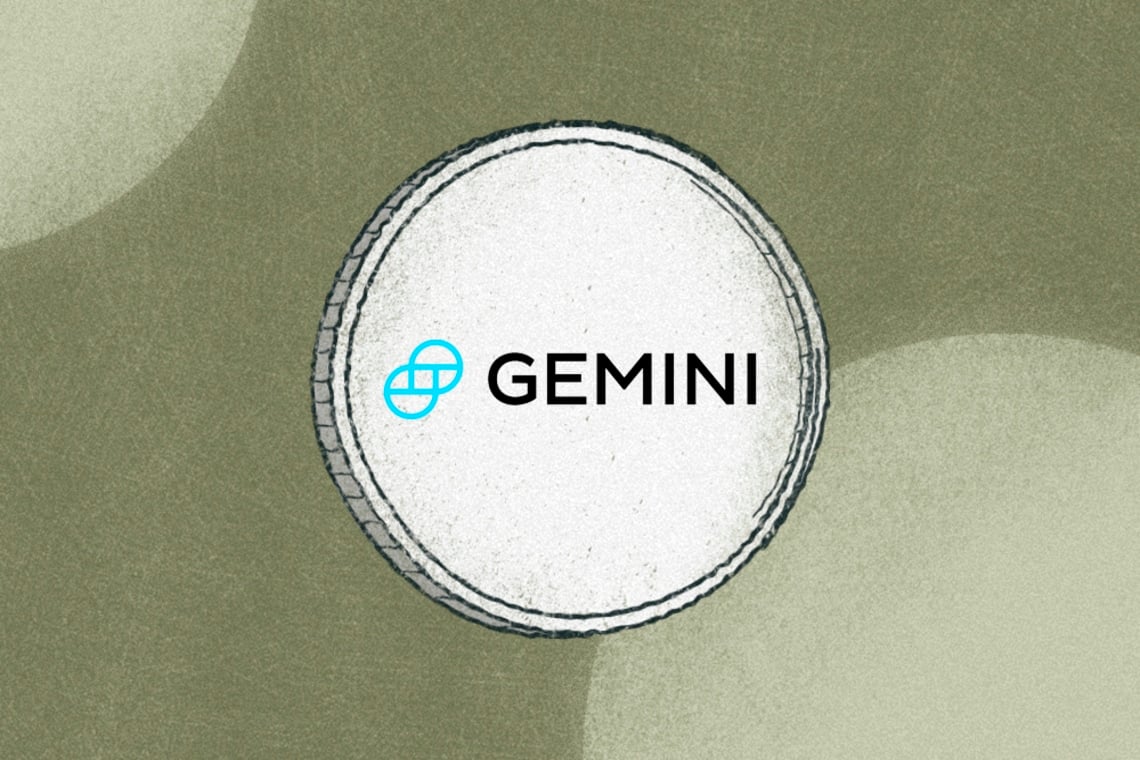Gemini has recently been caught up in the aftermath of the crypto bear market as well, yet its stablecoin GUSD (Gemini USD) is holding up despite everything.
By now it has slipped to eighth place by market capitalization among the major stablecoins pegged to the US dollar, with just over $600 million. It is enough to consider that the most capitalized one, USDT, is worth more than a hundred times as much, and even DAI is worth almost ten times as much as GUSD.
Summary
Gemini USD
Gemini Dollar, whose ticker is precisely GUSD, made its debut in the crypto markets in late 2018, which was during the most acute phase of the previous post-bubble bear market.
It never lost its peg with the dollar, apart from a drop to $0.90 in March 2020 during the financial market meltdown caused by the onset of the pandemic, and another to $0.93 in May 2021.
Initially it capitalized less than $100 million, but with the onset of the last major bull run in 2021 it managed first to rise to around $130 million, and then all the way above $300. In other words, its market capitalization tripled in 2021.
By March 2022, it had also risen to 400 million, but in November it suddenly shot up to nearly 900 million, and then settled back to 600.
The reason is that during the collapse of FTX, there had been a real panic in the crypto markets about the resilience of the major stablecoins, hence those commonly thought to be safer, such as USDC and precisely GUSD, took advantage.
The Gemini exchange
Gemini is a crypto exchange based in New York, which is arguably the US state with the most stringent financial regulations, to the extent that several crypto exchanges have chosen not to operate there.
This makes Gemini virtually the most regulated US crypto exchange, because it is forced by New York State law to comply with stricter regulations than any other US exchange, and not only.
This is why those who are concerned about the holding of stablecoins issued by less regulated entities take refuge in GUSD, or Coinbase’s USDC, at the most critical times.
In spite of this, the Gemini exchange seems to have some problems all the same, not of a legal or fiscal nature, but an economic one.
Indeed, as early as October 2022 there were rumors of a possible economic crisis for Gemini, but the subsequent collapse of FTX seemed at first to have eased it, eliminating a major competitor from the US market.
Instead, it was later discovered that the exchange had liquidity problems resulting from Genesis Global’s own problems that were caused by FTX’s failure.
At this point, the sudden drop in GUSD’s market capitalization from nearly $900 million to just over $600 that occurred in one week in mid-November 2022 is something that could be explained. However, thereafter, when the liquidity problems were discovered, it did not fall again, so it is possible that it was just some kind of retracement followed by a very large and too fast rise.
Will GUSD hold the peg?
At any rate, the future looks uncertain.
A recent analysis by Kaiko analyst Riyad Carey notes that there is low liquidity of GUSD on exchanges, and GUSD is only redeemable on Gemini.
Given the low liquidity, if things turn bad for Gemini it would not be surprising to see GUSD temporarily deviate from the peg and then recover once the liquidity crisis is over. However given GUSD’s minor importance in the crypto markets, its depegging is unlikely to do any damage to other stablecoins.
In other words, this is an issue related solely to Gemini, and its users, which is very unlikely to create problems similar to those created by FTX.
Moreover, Gemini is an exchange that has been around for several years now, as it was founded as early as 2015, and has already successfully withstood two major bear markets. FTX, on the other hand, was only founded in 2019, and faced its first major bear market last year.
It is worth noting that as of July 2017 Gemini managed 26% of the trading volume of crypto markets in the US , compared to Kraken’s 44% and Coinbase’s 30%, but since then a steady trend has begun due in part to new competitors such as FTX and Binance US. By December 2022, Gemini’s market share had plummeted to 1.2%, with, for example, Binance US rising above 10%.
Thus the biggest problem for Gemini is competition, despite the fact that one major competitor disappeared in November. It remains to be seen whether it will be able to hold its own in such a competitive and compressed bear market, or whether its difficulties will worsen.




